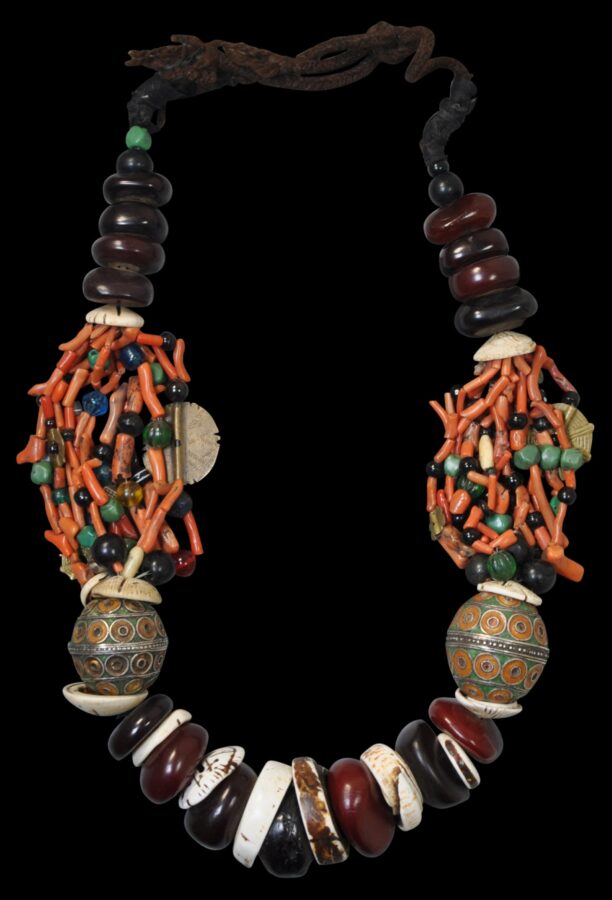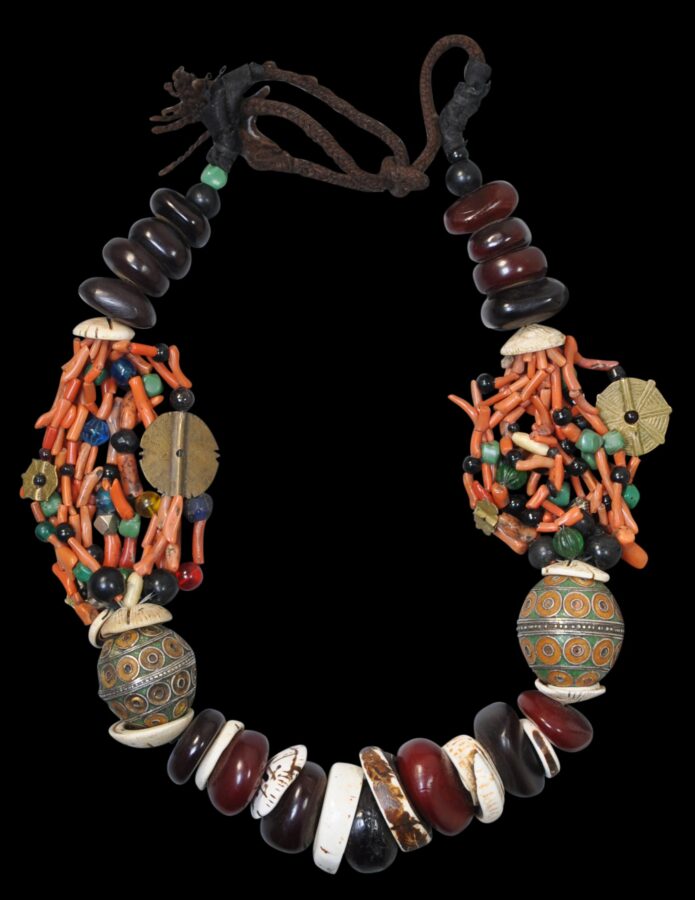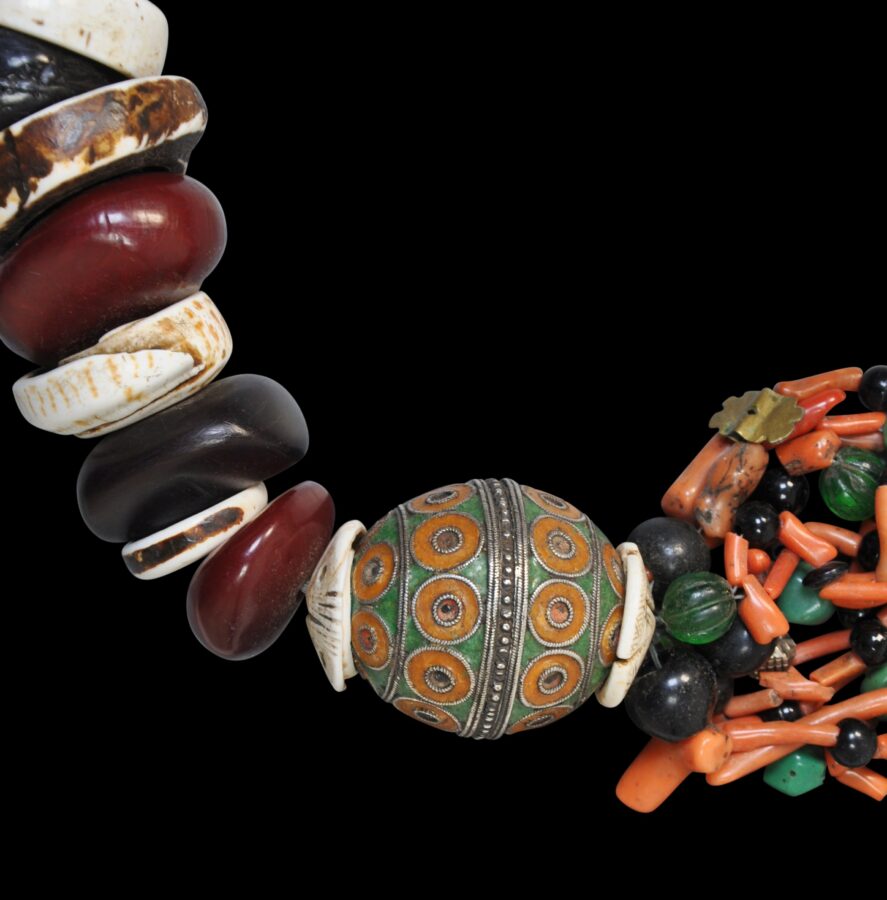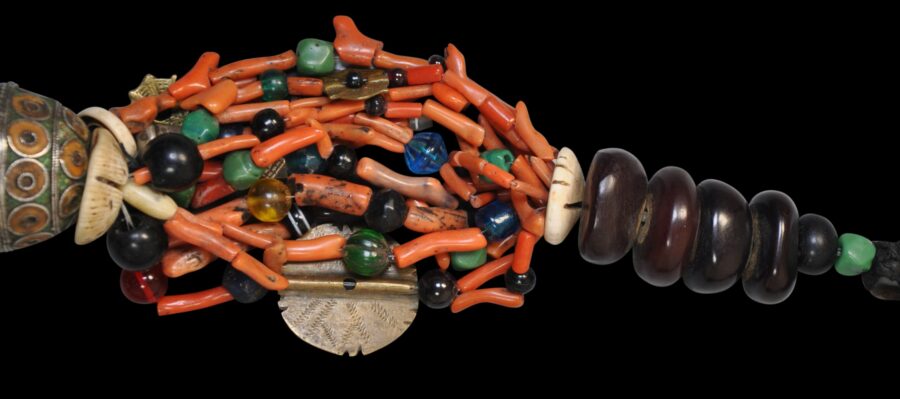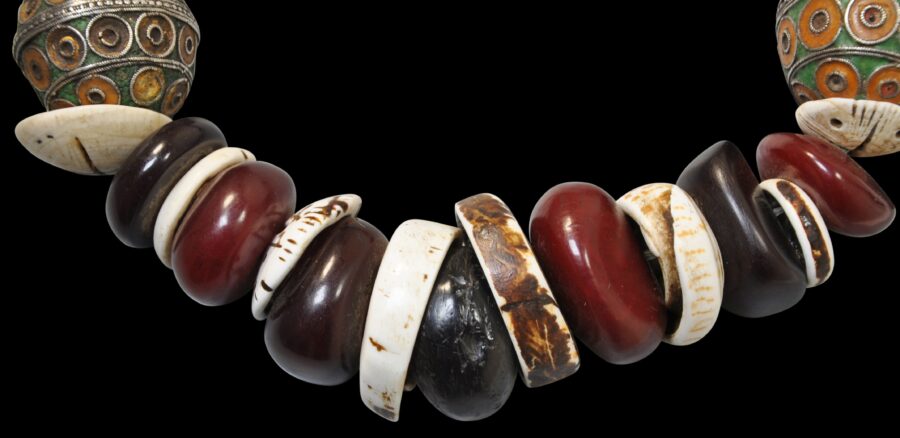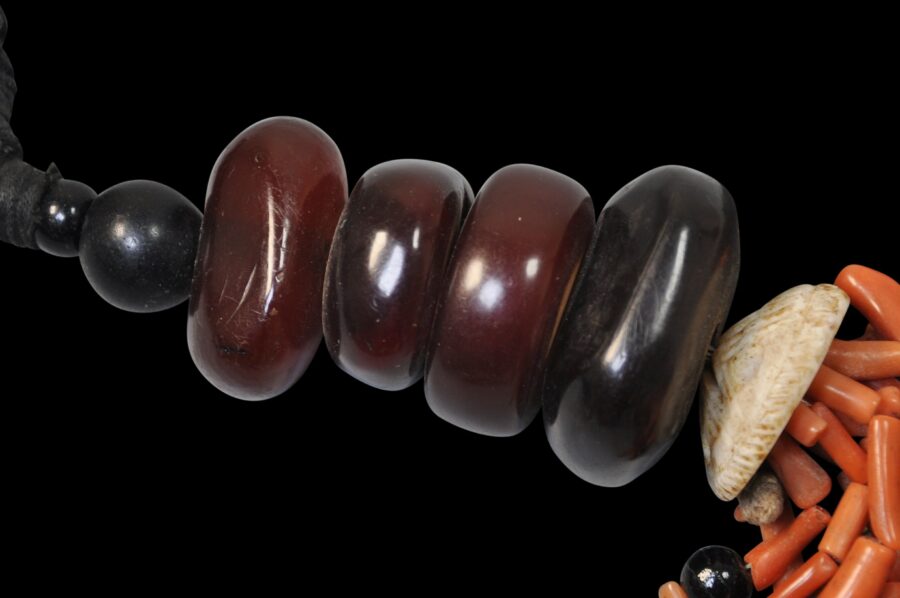Enquiry about object: 9311
Spectacular Moroccan Large Amber ‘Treasure’ Necklace (Tifilit)
Berber people, Anti-Atlas, Draa Valley, Morocco early 20th century
circumference: approximately 102cm, diameter of the largest bead: approximately 4.6cm, weight: 809g
Provenance
private collection, US
This spectacular example of a Moroccan ‘treasure’ necklace from the Berber or Amazigh people of Morocco, is laden with worn sections of branch coral (sp. Corallium rubrum), lumps of dark red amber, carved conus and other shell, hexagonal turquoise-coloured beads, glass trade beads, and cast brass beads and other elements.
It has two large silver and enamelled primal egg-like hollow balls are known as taguemmut and are produced in the Tiznit region, south of Marakech. The two here are decorated with orange-yellow and pale green enamel.
Included are 15 dark red or cognac-coloured amber beads of graduated sizes, as are two brass ‘cobweb’ disks which are very much associated with Jewish casters in Morocco.
The shell disks are made from conus shells which most probably were made in Mauritania.
Included among the profusion are pumpkin-shaped glass beads from Europe, and a barrel-shaped mosaic bead with drawn-cane insets probably of Egyptian origin.
Such opulent necklaces were intended to serve as ostentatious displays of wealth. The bigger the necklace with more elements, the wealthier and of higher status was the owner. The amber particularly signified wealth and the coral served as a protective, talismanic device.
Not only were such necklaces representative of great monetary value they were also a means of storing up wealth so that it could be added to or subtracted from as required. This was possible because women strung their own necklaces. Similar to a bank account, elements could be added (like a deposit) or removed and sold (like a withdrawal) when money was needed. In this way, finery constituted a form of domestic savings that was also portable and relatively well protected by being with the owner at all times. This use of jewellery as a relatively liquid form of wealth explains why so much of it was hoarded in Morocco by the Berbers particularly. Such necklaces also were worn by localised Jewish women.
Related necklaces of this quality are illustrated in Draguet (2020, ill. 156, 157, 158).
No longer are such necklaces worn. Instead Berber women today prefer to wear gold jewellery as finery and as a store of wealth.
The example here compares well with the best published examples and those in museums. It is large, extravagant and wearable.
References
Clarke, C. (ed.), Arts of Global Africa: The Newark Museum Collection, Newark Museum, 2017.
Draguet, M., Berber Memories: Women and Jewellery in Morocco, Mercatorfonds, 2020.
Goldenberg, A., Art and the Jews of Morocco, Somogy Editions, 2014.
Grammet, I., & M. de Meersman (eds.), Splendeurs du Maroc, Musee Royal de l’Afrique Centrale, 1998.
Hoek, C., et al, Ethnic Jewellery: From Africa, Asia and Pacific Islands, Pepin Press, 2004.
Leurquin, A., A World of Necklaces: Africa, Asia, Oceania, America from the Ghysels Collection, Skira, 2003.
Liu, R.K., A Universal Aesthetic: Collectible Beads, Ornament, Inc, 1995.
Seiwert, W.D., Jewellery from the Orient: Treasures from the Bir Collection, Arnoldsche Art Publishers, 2009.
Sherr Dubin, L., The Worldwide History of Beads, Thames & Hudson, 2009.


